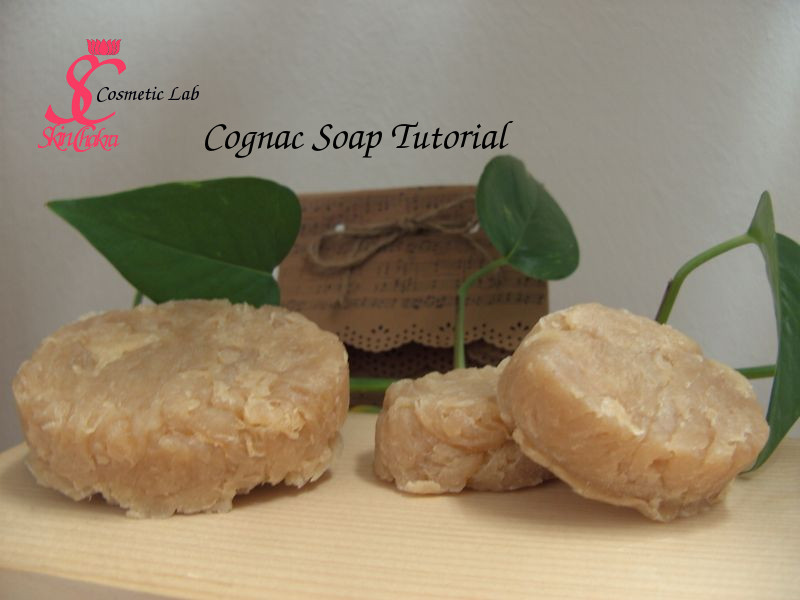
Sonntag, 19. Januar 2014
Cognac Soap-Rebatch

This would be a perfect Valentine's Day gift for him and since the soap is a rebatch, you can simply wrap it after the soap is hardened. It doesn't need any curing and you've pretty enough time to prepare this soap for this years Valentine's day.
If you've never tried rebatch or for a refreshment, have a look at our previous posts about rebatch here and here and here.
As always before we begin I want to advise you to have a look on our older post about general hygienic manufacturing practice in a cosmetic lab and basic equipments for a cosmetic lab.
For a rebatch you need generally some soap noodles or soap chips. You can purchase them or prepare them yourself or you can apply a soap whose oil/lye balance is alright but you're not satisfied with the appearance of the soap.
Then you need small amounts of liquid. Remember the liquid should be enough to wet the soap but should not cover the whole soap. The more liquid you apply, the longer the process of making and drying would take. The liquid could simply be distilled water (boring?), a tea, coffee, a hydrosol , Wine, beer or cognac, milk or a fruit or vegetable juice. It's totally up to you what you apply.
Depending on the original soap base, you may add a plant oil as a superfat, vitamins, plant extracts etc. to push up the soap.
The finished soap could be poured into a loaf mold or in small cavity molds. Generally heavy duty and simple molds are better than flexible and filigree molds. But this is something you'll adapt to your requirements and preferences as you proceed with the work.
For this project I've applied cognac as my liquid, and have applied our luxury soap base . After the soap was finished, I've applied lipophilic hops extract and poppy seed oil as a superfat. As a fragrance, I decided to apply nutmeg essential oil which is a kind of mysterious, magical, masculine fragrance.
As a mold I've decided to apply an HD oval mold in addition to our mini oval silicone mold.
For this project (500 gr soap base) you need:
500 gr Soap chips- Luxury
ca. 300 gr Cognac
4,0% Poppy seed oil as a superfatt (20,0 gr)
1,0% lipophilic hops extract (5,0 gr)
0,5% Tocopherol (2,5 gr)
3,0% Nutmeg essential oil (15 gr)
You'll need as well:
a small pot for the soap and a bigger pot for the water bath
disposable pipettes
Glass beakers for cognac, superfat oil and the essential oil
a suitable loaf mold or small cavity mold
Spatulas to stir the soap
Here we go:
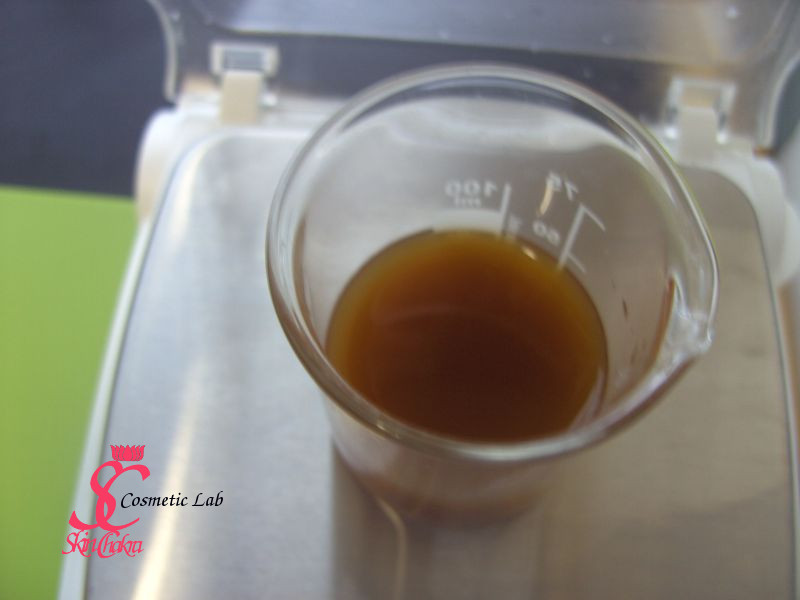
One: Simmer the cognac one day in advance. In contrast to making CP soap, the original and the final weight/volume of the liquid should not be very exact. Here I have simmered 300 gr cognac to about 1/4 of its volume. For 500 gr soap chips I've applied 65 gr simmered cognac. Cognac should be simmered in a water bath. Adjust the water temperature around 80-85 degrees Celsius. Cognac would become cloudy/turbid.
Two: Leave the cognac beaker covered in the fridge overnight. On the next day, if you observe any sedimentation filter the cognac through a tea filter or a laboratory filter paper.
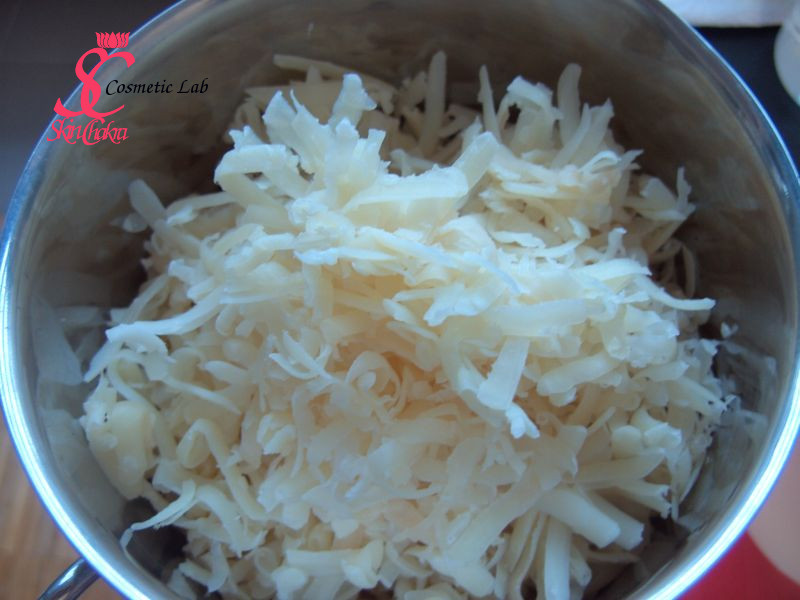
Three: Weigh the soap chips in a suitable pot or glass jar.
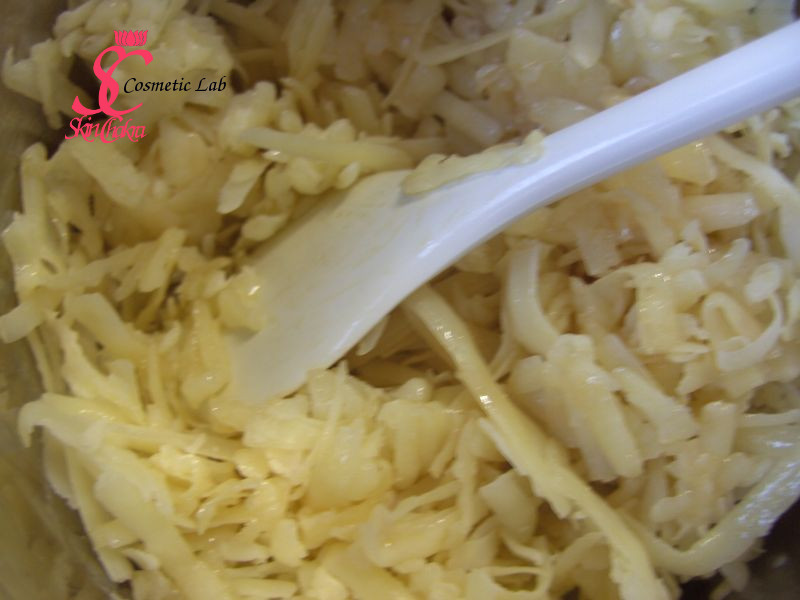
Four: Add cognac to soap chips. Here the soap is only slightly being wet with cognac. The soap should not be covered with cognac. The less liquid applied the better the results. You have always time to increase the liquid amount during the process but avoid applying too much liquid at the beginning.
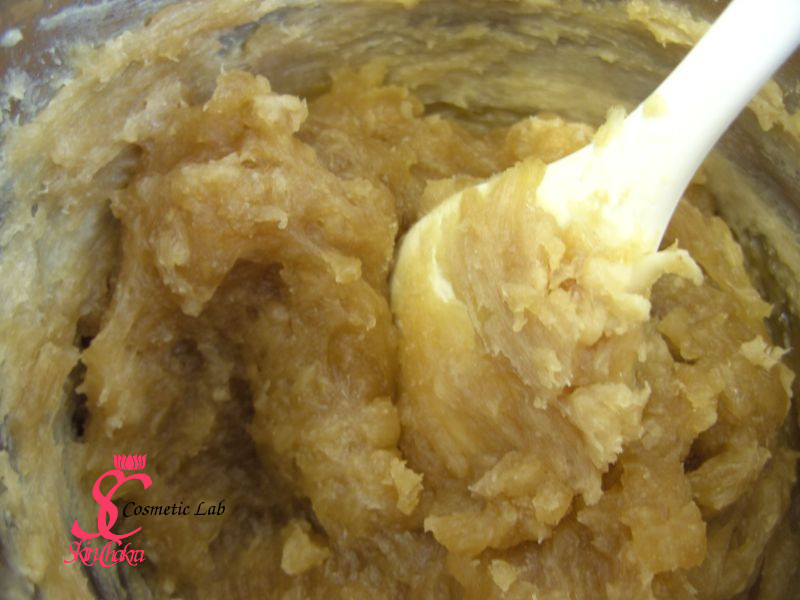
Five: At the beginning the liquid might seem to you very little and the soap very dry. It is alright. No panic. Put the pot in the water bath and adjust the water temperature at around 80 degreed Celsius. After only a few minutes you observe that the whole soap is wetted and it seems as if the liquid has been increased. Stir the soap gently with an spatula or spoon every now and then. Try to avoid agitation and foaming. Depending on the liquid volume you've applied the process takes from 3-5 hrs. Soon the soap chips would be transformed to a paste, something like potato puree. Keep an eye on the pot and stir the soap.
The process is finished as the individual chips build a kind of paste and you can not recognize the chips.
If the soap appears very dry and crumbly, add a few mls (max to 5 ml) more cognac.
Remember: a rebatch has never the same appearance and consistency as a CP soap. It is coarser and seems like a paste rather than a high viscosity liquid.
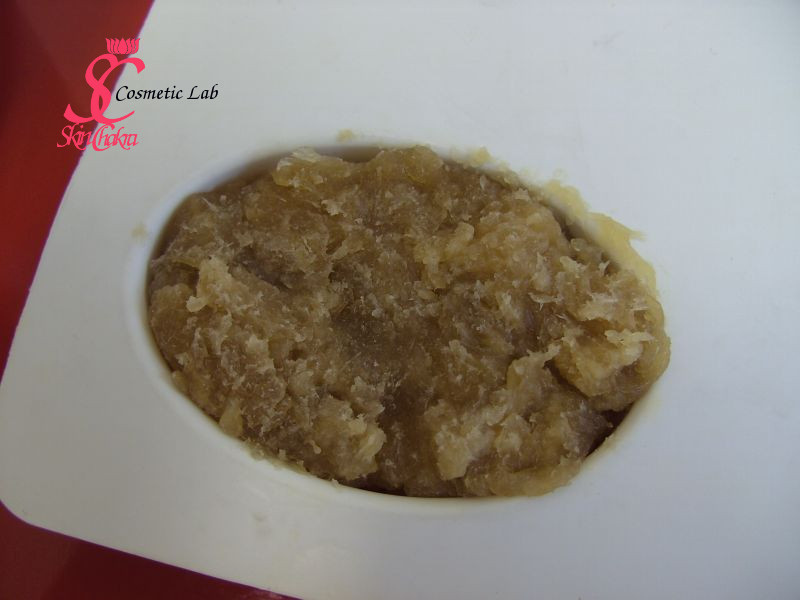
Six: After your satisfied with the soap turn the water bath off and allow the soap to cool down for about 10-15 minutes.
Now add the extract (hops extract), the superfat, vitamin E and the essential oil. Gently stir the paste. Try to avoid foaming.
The rebatch is rather pressed than poured into the mold. You can even shape the soap between your hands, make soap balls or discs or other geometrical shapes. Here I have pressed the soap into an oval mold.
After presseing the soap into the mold tap the mold a few times over the counter to cause a uniform distribution of the soap. (Here we come to the advantage of HD molds over flexible silicone molds).
Cover the mold with a kitchen wrap and leave it @ room temperature. Depending on the original consistency of the soap you may get the soap out of the mold after 24 hrs up to one week. Very probably, during your first rebatch trials, you'll apply too much liquid and the soap needs a long time to harden (don't ask how I know it ![]() ).
).
After bringing the soap out of the mold, it might need a few more days to harden completely or it might be ready to wrap. If you've applied a loaf mold cut the soap and let the bars harden just the same as you do with a CP soap. Only in this case the process doesn't take that much.
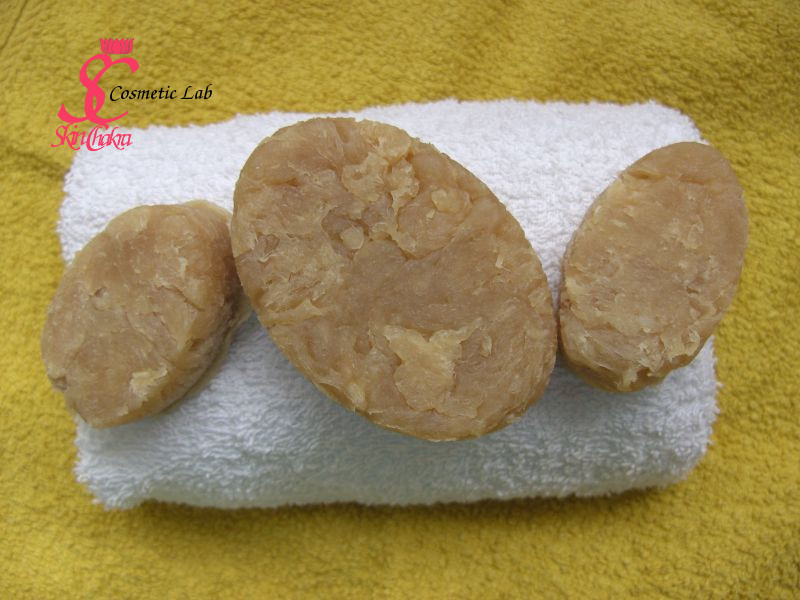
Here you see the coarse appearance of the soap. In our case, the soap was out of mold after 24 hrs and was wrapped after one more 24 hrs.
I hope you'll enjoy trying this recipe and making a perfect Valentine's day gift for him.
You can purchase all ingredients (except the cognac) for this project in SkinChakra® online shop.
BeHappy and have fun

